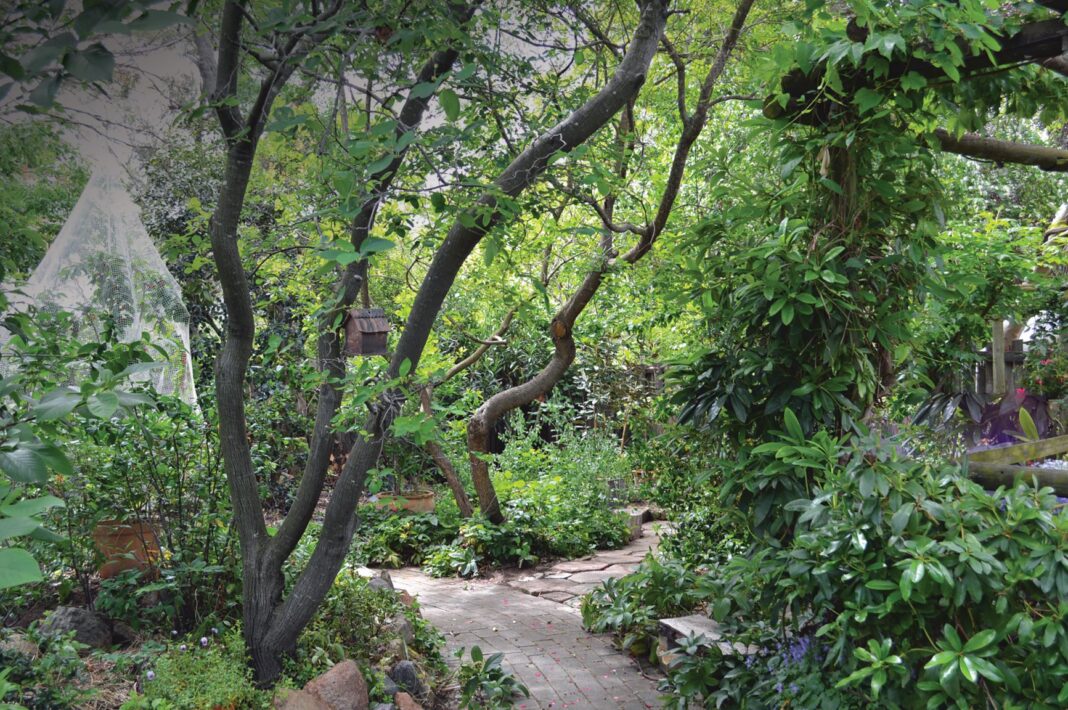Plants, especially trees in our urban landscape and backyards, have the ability to absorb and store carbon over many years. In fact, healthy forests, especially those with a diversity of plants, animals, fungi and organic matter, play a critical role in regulating greenhouse gas emissions in the atmosphere.
Having green spaces in our urban environments enables us to:
- Offset daily human activities which contribute to greenhouse gas emissions;
- Create thriving plant and animal ecosystems;
- Create a more protected and energy efficient urban environment. By having thoughtfully designed and situated green spaces, we help protect our city and homes from damaging winds, hot summer suns, bitter winter frosts and airborne pollutants such as dust and traffic fumes.
To put matters into perspective, a healthy 8m Eucalyptus tree with a 40cm diameter has the potential to sequester one tonne of carbon in its lifetime! Due to increased volume and ability to photosynthesise, larger longer-lived trees with broader crowns store more carbon than smaller ones. Indigenous plant species, which are more likely to thrive in local conditions, often store carbon more effectively than non-indigenous and exotic trees.
Things you need to know before planting for carbon storage in your backyard:
- Consider any potential risks, e.g. ensure trees aren’t planted too close to buildings, that they won’t impact on your home’s solar potential, and they don’t pose an undue fire risk;
- Draw up a planting plan and plant species list to take the guesswork out of how many plants are needed and which varieties are best suited;
- Plants, especially trees, should be allowed room to grow and develop into strong resilient specimens. Spacings will vary depending on plant variety, e.g. Forest species of Eucalypts can be planted approximately 5m apart for a continual tree canopy;
- Select plant species for attributes such as longevity, hardiness to weather extremes and drought, fire resistance, pest and disease resistance, low maintenance, and suitability to urban and backyard environments (e.g. trees which don’t pose significant safety risk such as a branch dropper). By selecting reliable species, the ability to store carbon over a prolonged period is increased;
- Consider growing native plants propagated from seed and from local provenance as they are genetically diverse and more acclimatised to local conditions;
- Reliable watering is essential during the establishment phase and also over prolonged hot dry periods. Replenish organic matter and mulch as needed, avoiding plant stems. If necessary, carry out any formative pruning on trees when they are young;
- Ideally, the aim is to replicate and encourage a diverse and wholly self-sustaining system, using a range of plant types and sizes.
Where to buy Australian native plants
- Cool Country Natives in Pialligo is a reputable supplier of native plants, including those endemic to the ACT region. They also hold regular market days; coolcountrynatives.com.au
- The Australian Native Plant Society holds seasonal native plant sales at the ANBG during spring and autumn (check the ‘What’s On’ page for details); parksaustralia.gov.au/botanic-gardens/do/whats-on/
- Nindethana Australian Seeds offer a large range of native seeds; nindethana.net.au
For more:



